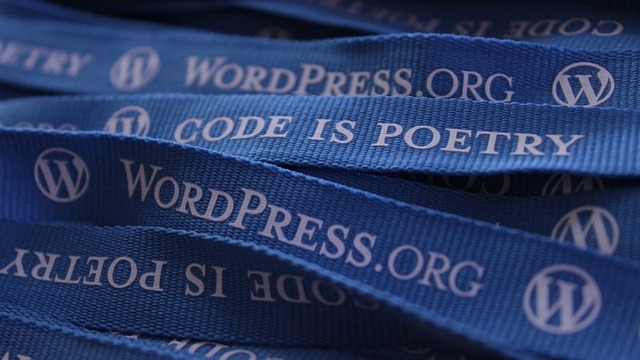Containerization significantly enhances software application consistency and portability by encapsulating applications within containers, decoupling them from infrastructure. SonarQube is a pivotal tool in this ecosystem, offering comprehensive static code analysis to ensure high standards of quality assurance. Its integration with Docker and Kubernetes enables developers to automate the early detection of issues like code smells, vulnerabilities, and bugs. SonarQube accelerates deployment by improving application security and performance while supporting a wide range of programming languages and providing detailed dashboards for actionable insights on code quality.
To implement SonarQube within a containerized development environment and CI/CD pipeline, one must deploy a Dockerized SonarQube instance, followed by configuring the application's build script to include SonarQube scanning post-build. This involves running the SonarScanner as a Docker container, which analyzes code against SonarQube's quality rules and reports results back for review. Deploying SonarQube within an isolated network segment using tools like Docker Swarm or Kubernetes enhances security and scalability. Regular updates to the SonarQube Docker image ensure security and performance, while monitoring performance and logs facilitate optimization of SonarQube's operation for sustained high code quality standards.
For optimal performance, it's essential to allocate sufficient resources to the SonarQube container and select a high-performance base Docker image that aligns with its technical requirements. Implementing caching strategies can further streamline analysis processes. Regularly updating security patches and performance enhancements are vital for maintaining robustness and security within the containerized environment, ensuring SonarQube remains an indispensable tool in continuous code quality improvement efforts.
Dive into the realm of modern application deployment with SonarQube, a pivotal containerization platform that streamlines code quality analysis and management. This article delves into the intricacies of integrating SonarQube within containerized environments, ensuring robust, scalable, and maintainable workflows. From setting up your development environment to automating code quality checks in CI/CD pipelines, we explore best practices and advanced performance optimization techniques tailored for containerization. Enhance your application deployment strategy with the insights provided, and harness SonarQube’s capabilities to their fullest potential.
- Understanding Containerization with SonarQube: A Robust Approach for Application Deployment
- Setting Up Your Environment for SonarQube Integration in Containerized Workflows
- Best Practices for Leveraging SonarQube within a Containerized Architecture
- Automating Code Quality Analysis with SonarQube in Your CI/CD Pipeline
- Advanced Tips and Tricks for Optimizing SonarQube's Performance in Containers
Understanding Containerization with SonarQube: A Robust Approach for Application Deployment

Containerization represents a pivotal approach in modern software deployment, enabling applications to run consistently across various environments by encapsulating them within containers. These containers abstract the application’s code from its infrastructure, ensuring that each container is a reproducible and lightweight unit of software. SonarQube stands out as an indispensable tool in this context, offering robust static code analysis for quality assurance within these containers. By integrating SonarQube into the containerization workflow, developers can automate the detection of code smells, vulnerabilities, and bugs early in the development lifecycle. This proactive measure not only streamlines the deployment process but also enhances application security and performance.
Furthermore, SonarQube’s versatility is evident as it supports a variety of programming languages and containerization platforms like Docker and Kubernetes. It provides detailed dashboards that allow for the visualization of code quality metrics, making it easier to pinpoint areas of concern and implement necessary improvements. The integration of SonarQube with containerization platforms ensures that applications undergo rigorous scrutiny before reaching production. This synergy between SonarQube and containerization empowers organizations to maintain high standards of code quality while expediting the deployment process, ultimately leading to more reliable and efficient software solutions.
Setting Up Your Environment for SonarQube Integration in Containerized Workflows

When integrating SonarQube into containerized workflows, setting up your development environment is a pivotal step to ensure seamless quality assurance processes. This integration allows for real-time code analysis and reporting within the Continuous Integration/Continuous Deployment (CI/CD) pipeline. To commence, it is necessary to establish a Dockerized SonarQube instance, which can be achieved by pulling the official SonarQube image from Docker Hub using a command such as `docker pull sonarsource/sonarqube`. Once the image is available locally, deploy the container using `docker run -d –name sonarqube -p 9000:9000 -v sonarqube_data:/opt/sonar/conf/sonarqube.properties sonarsource/sonarquube`. This command sets up the SonarQube server with persistent storage for configurations and data.
Next, configure your application’s build script to include the necessary steps for SonarQube scanning. Utilize the SonarScanner tool, which is available as a Docker image as well (`sonarsource/scanner`). Configure the scanner with your project’s properties, including the correct SonarQube server URL and authentication details, typically by setting environment variables or mounting a volume containing the `sonar-project.properties` file into the scanner container. Upon triggering a build within your CI/CD pipeline, this configuration will cause the SonarScanner to execute post-build, analyzing your codebase against the rules defined in SonarQube. The results of this analysis are then reported back to the SonarQube server, where they can be reviewed, managed, and acted upon accordingly, facilitating an informed approach to code quality improvements within a containerized environment.
Best Practices for Leveraging SonarQube within a Containerized Architecture

When integrating SonarQube into a containerized architecture, it’s crucial to establish a robust CI/CD pipeline that facilitates continuous inspection and feedback. Dockerizing SonarQube allows for its consistent deployment across various environments, ensuring that the application quality gate remains uniform. It’s advisable to deploy SonarQube as a container within an isolated network segment for security best practices, utilizing services like Docker Swarm or Kubernetes for orchestration. This setup not only isolates the code analysis tool but also enables scalability and high availability, which are essential for maintaining performance and reliability.
Furthermore, incorporating SonarQube scanning as a step within the pipeline, immediately after code integration, helps in identifying issues early in the development lifecycle. By leveraging Docker images specifically tailored for SonarQube, such as those provided by JFrog, you can streamline updates and maintain a secure and stable environment. It’s also recommended to configure SonarQube to scan multiple repositories simultaneously to optimize resource utilization and reduce downtime during analysis. Regularly updating the SonarQube Docker image to the latest version with security patches is a proactive measure to safeguard against vulnerabilities. Additionally, monitoring SonarQube’s performance and logs within the containerized setup can provide insights into its operation and inform necessary adjustments for peak efficiency. Implementing these best practices ensures that SonarQube serves as an effective tool in maintaining code quality within a containerized architecture.
Automating Code Quality Analysis with SonarQube in Your CI/CD Pipeline

Incorporating SonarQube into a containerization platform’s CI/CD pipeline significantly enhances the automation of code quality analysis, ensuring that applications adhere to high standards of maintainability and security from the outset. SonarQube serves as a robust tool for continuous inspection, scanning source code for bugs, vulnerabilities, code smells, and technical debt. When integrated within a containerized environment, it can automatically trigger analyses on every code commit or pull request, providing immediate feedback to developers. This immediate assessment enables teams to address issues early in the development cycle, thereby streamlining the process of improving code quality and reducing the likelihood of late-stage surprises. The containerization platform facilitates this by creating consistent, isolated environments for SonarQube and the applications under test, ensuring that analyses are performed under conditions that mirror production. Furthermore, the platform’s scalability allows for the easy expansion of SonarQube’s capabilities as project requirements grow, maintaining a seamless integration with the CI/CD workflow. By leveraging Docker containers, for instance, SonarQube can be easily deployed and managed across various stages of the pipeline without the need for complex configurations or infrastructure management, thus simplifying the adoption of code quality analysis practices. This containerization approach not only bolsters the reliability and efficiency of the software delivery lifecycle but also ensures that best practices in code quality are consistently upheld throughout the application’s lifetime.
Advanced Tips and Tricks for Optimizing SonarQube's Performance in Containers

To maximize the performance of SonarQube within a containerized environment, it is crucial to implement specific configurations and optimizations. One advanced tip involves allocating sufficient memory and CPU resources to the container running SonarQube. The default settings may not suffice for large-scale or complex codebase analyses. It is advisable to tailor these resources according to the application’s needs, ensuring that there is ample overhead for concurrent analysis requests. Additionally, leveraging persistent storage with appropriate input/output (IOPS) can significantly improve scan performance by reducing the impact of read and write operations on the underlying infrastructure.
Another important aspect to consider when containerizing SonarQube is the selection of an optimized base image. Using a pre-configured image that aligns with SonarQube’s system requirements can streamline deployment and resource allocation. Regularly updating this base image to include the latest security patches and performance enhancements is also prudent. Furthermore, implementing caching mechanisms for frequently analyzed codebases can accelerate analysis times by minimizing the need to download large sets of data repeatedly. Lastly, monitoring SonarQube’s performance metrics within the container will provide insights into potential bottlenecks or resource contention issues, allowing for proactive tuning and maintenance to maintain optimal operational efficiency.
In conclusion, embracing SonarQube as a containerization platform for deploying and managing applications offers a robust and scalable approach that enhances code quality analysis within CI/CD pipelines. By meticulously setting up your environment and adhering to best practices, you can optimize SonarQube’s performance in containers, ensuring efficient and reliable application deployment. The insights and strategies outlined in this article provide a comprehensive guide to leveraging SonarQube effectively, thereby maintaining high standards of code quality and operational efficiency. With the advanced tips and automation techniques discussed, your containerized workflows are poised to deliver consistently high-performing applications.
























